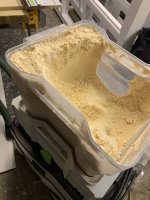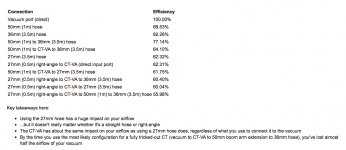Hey all. I found this older thread and not much else, first and foremost was curious to know what others are experiencing and what you've tried to improve the situation.
In short, when I use the CTVA, my dust collection from my Bosch miter, Kreg foreman, Festool track saw, or Bosch router table, go from pretty good to atrocious. With a minimal cut like taking the factory edge off a sheet of plywood, I end up coated in wood chips when using the cyclone. It's doing a substantially worse job than a PRO dust separator on a bucket connected to an old RIDGID shop vac.
Unfortunately I didn't realize Festool has a 30 day limitation on returns. I bought at Rockler and thought I had 90, so I took the time to see if I could improve the situation with tape in a few spots, but to no avail. I do end up with shavings in the bag, but it's sort of hilarious to compare the shavings in the bag vs on the ground.
I'm all ears for suggestions. Festool support has been a non-help so far, sending me what appears to be stock copy-paste answers to FAQs.
In short, when I use the CTVA, my dust collection from my Bosch miter, Kreg foreman, Festool track saw, or Bosch router table, go from pretty good to atrocious. With a minimal cut like taking the factory edge off a sheet of plywood, I end up coated in wood chips when using the cyclone. It's doing a substantially worse job than a PRO dust separator on a bucket connected to an old RIDGID shop vac.
Unfortunately I didn't realize Festool has a 30 day limitation on returns. I bought at Rockler and thought I had 90, so I took the time to see if I could improve the situation with tape in a few spots, but to no avail. I do end up with shavings in the bag, but it's sort of hilarious to compare the shavings in the bag vs on the ground.
I'm all ears for suggestions. Festool support has been a non-help so far, sending me what appears to be stock copy-paste answers to FAQs.



